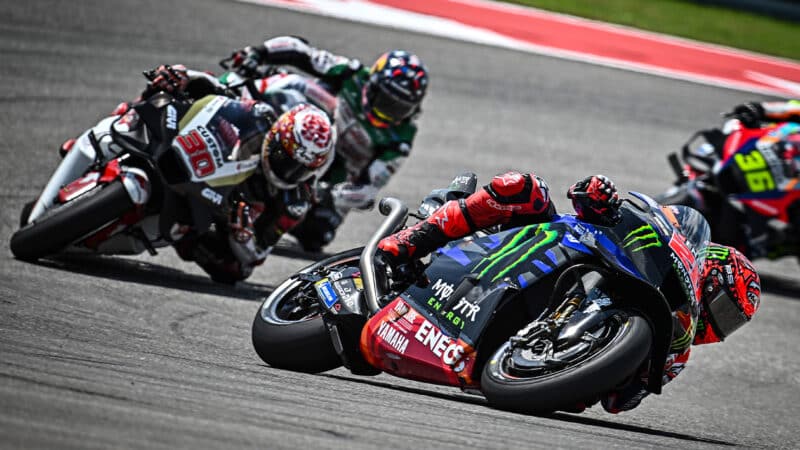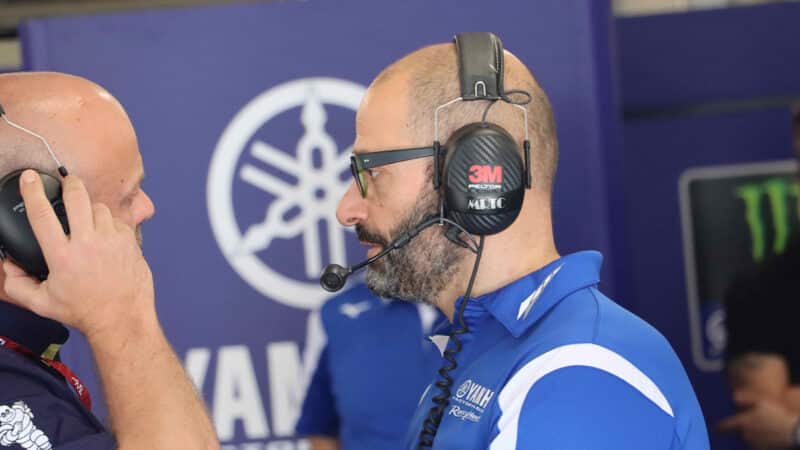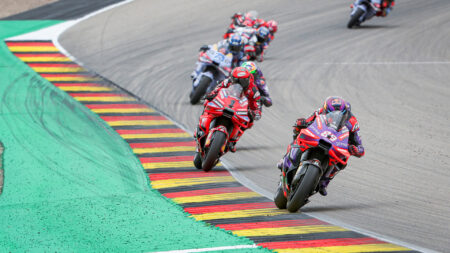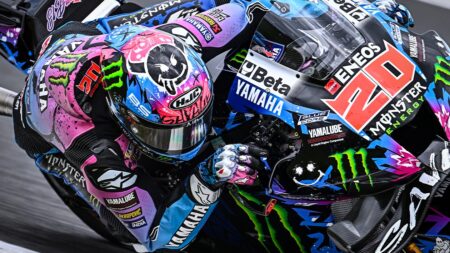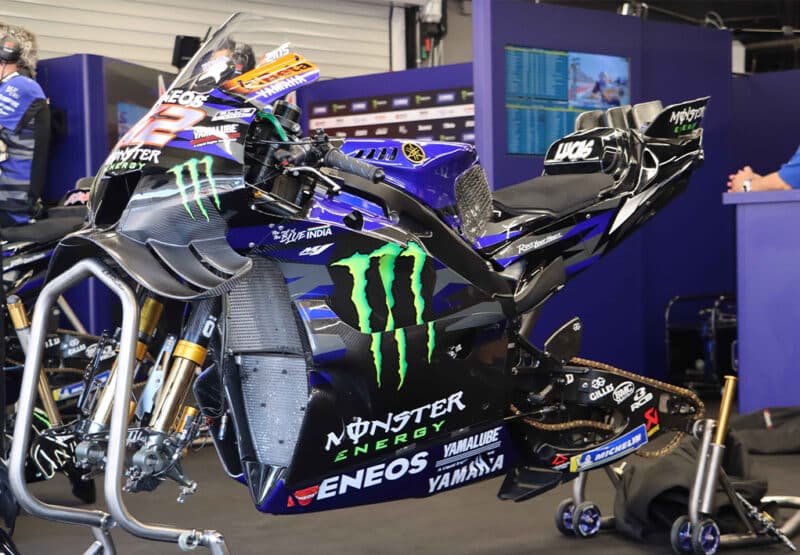Before last month’s Dutch round, Yamaha tested at Valencia, where Quartararo and luckless team-mate Alex Rins evaluated two new YZR-M1 engine specs.
One of these engines gives better agility, which suggests reduced engine inertia, probably through a lighter crankshaft. The other gives better stopping, most likely through revised compression ratio and firing configuration, plus refinements to the engine-braking software and exhaust valve.
Both Quartararo and team-mate Rins chose the second engine, even though it was little help at tracks like Assen and Sachsenring, where agility is so important. At most tracks what they really need is better stopping power from the engine, because using the rear tyre to stop the bike is hugely important now. And better stopping improves the most vital cornering factor – turning – because you can’t turn if you arrive at the corner too fast.
“With this new engine we can stop more and carry more speed [into corners [to turn better],” says Quartararo. “It doesn’t really help in fast corners, but I think we can see an improvement with this engine at tracks likes Austria and Misano.”
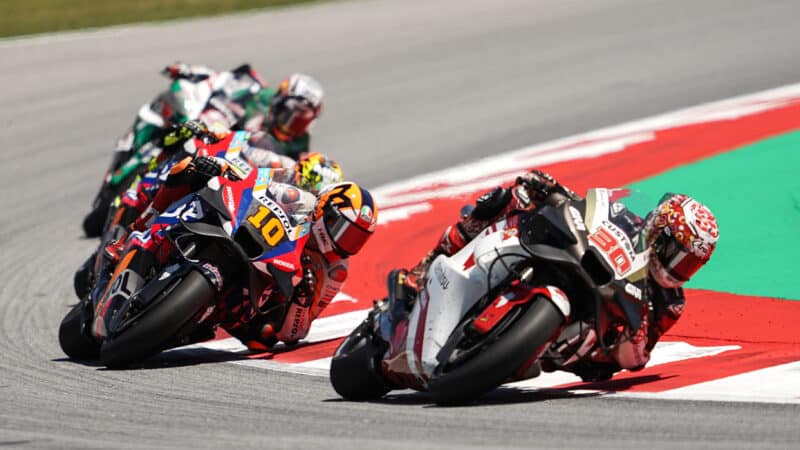
Nakagami leads Marini, Mir and Zarco at Barcelona – the fact that they often race together suggests they all face the same machinery limitations
Honda
Rins, who missed Sachsenring after a nasty highside at Assen, agrees.
“Here [at Assen] we don’t feel much improvement from the new engine, because Assen is mostly high-speed corners. At Valencia it was a bit better in the way you brake, release the brake and open the throttle.”
Quartararo knows there’s still a long way to go before Yamaha is back to competing at the front.
“We’ve gained a lot in power this year but we’ve lost a lot in other areas,” he says. “The aero is the biggest improvement we’ve made and we are still super-super-far [behind] on electronics.”
“Even if you can’t see we are making big steps, that is what we are doing”
Despite that, the 2021 MotoGP king is confident, because Yamaha has fully changed its way of working, prioritising speed of development over everything else.
“The way we work now is completely different,” he adds. “In the past, if we tested a new engine, we would never have it at the next race [Assen]. Maybe we would’ve had it at Silverstone [August’s British GP].
“So we are moving much faster and we have much clearer ideas – we have a direction and we know where we have to improve. I’m super-happy. Even if you can’t see we are making big steps, that is what we are doing. We are getting closer and we are working better.”
Quartararo has another reason to smile, despite missing the top ten at the last three races. Next year Pramac will run factory-spec M1s, doubling Yamaha’s number of riders. In the age of data this is a huge deal, because to benefit from new technologies like machine learning and artificial intelligence you need more data than you can get from two bikes.
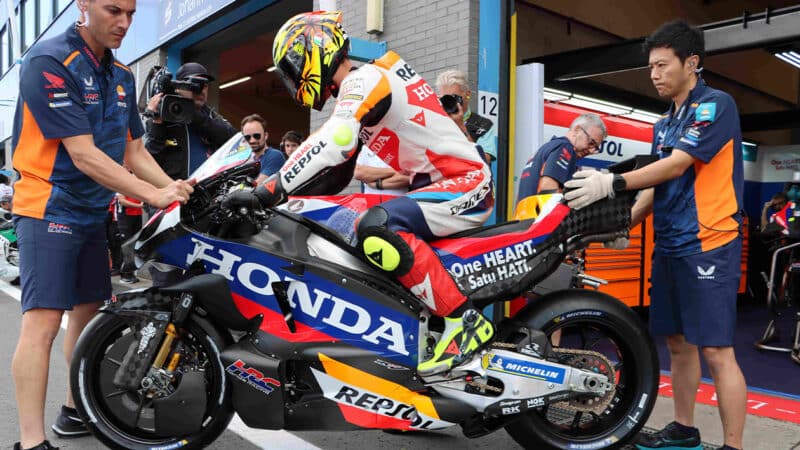
Mir is having another torrid season on the RC213V, with seven DNFs in sprints and GPs so far
Oxley
The mood is less optimistic at Honda, where Repsol’s Joan Mir and Luca Marini and LCR’s Johann Zarco and Nakagami often qualify together and race together at the back of the pack suggesting that they’re all restricted by the current RC213V’s limitations.
But the fact that they aren’t currently receiving lots of upgrades suggests something is happening.
New parts and upgraded parts flowed from Japan to the first few races, but they had little effect on performance. Pretty soon Honda engineers seemed to realise that the 2024 bike didn’t need tweaking, it needed consigning to the darkest recesses of the company’s Motegi museum. What’s needed is another total redesign.
And the fact that Mir and his fellow RC213V riders don’t expect anything new until September – probably the Misano tests – suggests that HRC’s next creation will be another all-new bike.
Mir was asked if he expects something different in September. “I expect it,” says the Repsol rider. “But I haven’t had any messages from Japanese staff that we will get this or that for the Misano tests. I expect but I don’t know.
“We know the area where we are losing – all the lap time! Now we are just waiting.”
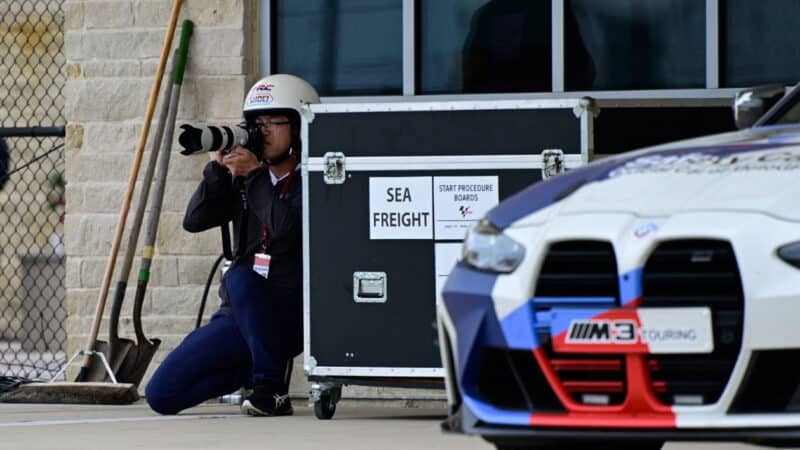
HRC videographer filming bikes in the COTA pit lane to compare machine behaviour
“The bike is still the same,” adds LCR rider Zarco. “The evolution will come later because we need time to build this evolution.
“There’s clearly a limit – we cannot go faster. We are one second away, which is a lot, but I accept it and I give information. It’s hard not be able to follow the others and really struggle with the bike.
